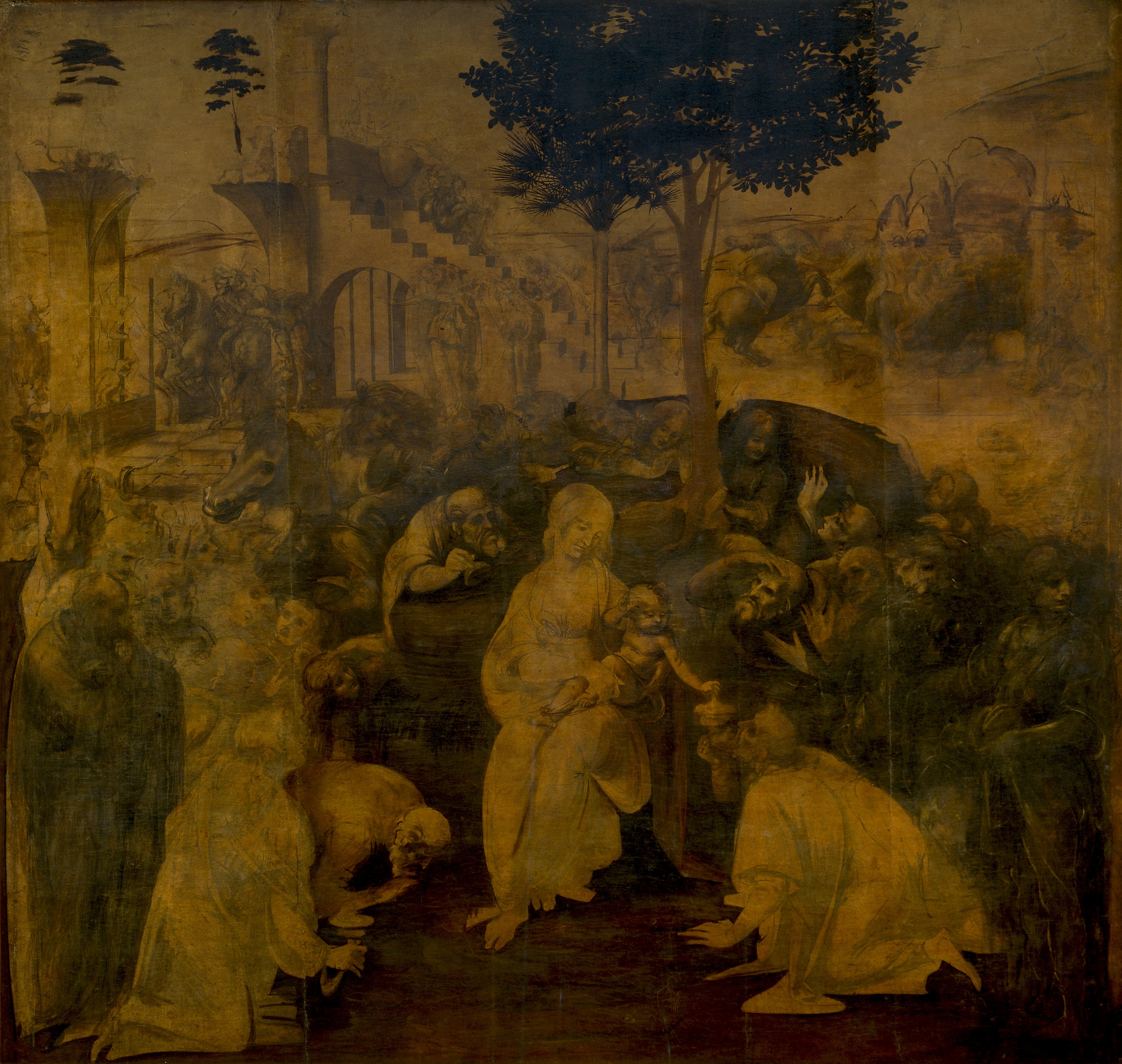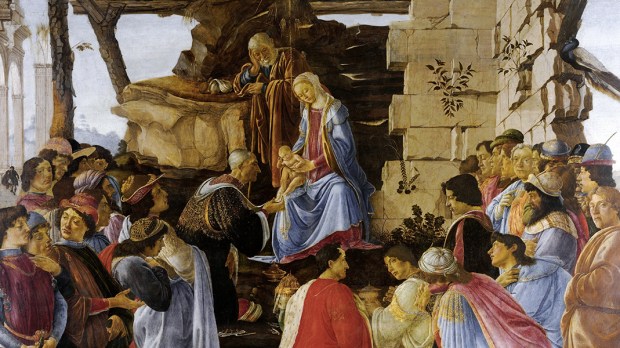Think of Christmas paintings, and images of the Christ child surrounded by an ox and a donkey probably come to mind. But many Renaissance artists have focused on the figures of the three magi, the three Kings that according to the Gospel of Matthew honored Jesus’ birth with gifts of gold, frankincense and myrrh.
Indeed, it is because of this biblical tale that 2,000 years later we celebrate Christmas by exchanging gifts with our loved ones. The “Three Kings” or the “three wise men” have been a staple of European art since medieval times. But it was during the Renaissance that the theme of the “Adoration of the Magi” really became a classic trope of visual arts. From Botticelli to Leonardo, in the 15th and 16th centuries, many great Renaissance artists were commissioned to create paintings of the arrival of the three Kings. Here are four of the most famous works on this theme by Renaissance masters.
1. Adoration of the Magi, Gentile da Fabriano, 1423
Described as “the culminating work of International Gothic painting,” this golden panel was commissioned by Florentine arts patron Palla Strozzi when Gentile da Fabriano arrived in Florence in 1420. The artist thus featured both his commissioner, Palla, depicted with a red hat, and his commissioner’s father, Onofrio, depicted as falcon trainer, as characters. The panel represents three different moments in the arrival of the magi, from their entrance into Bethlehem to their meeting the Virgin Mary. Gold is the dominant tone of the picture, adding to the overall feeling of opulence imparted by the rich brocades and precious textiles.
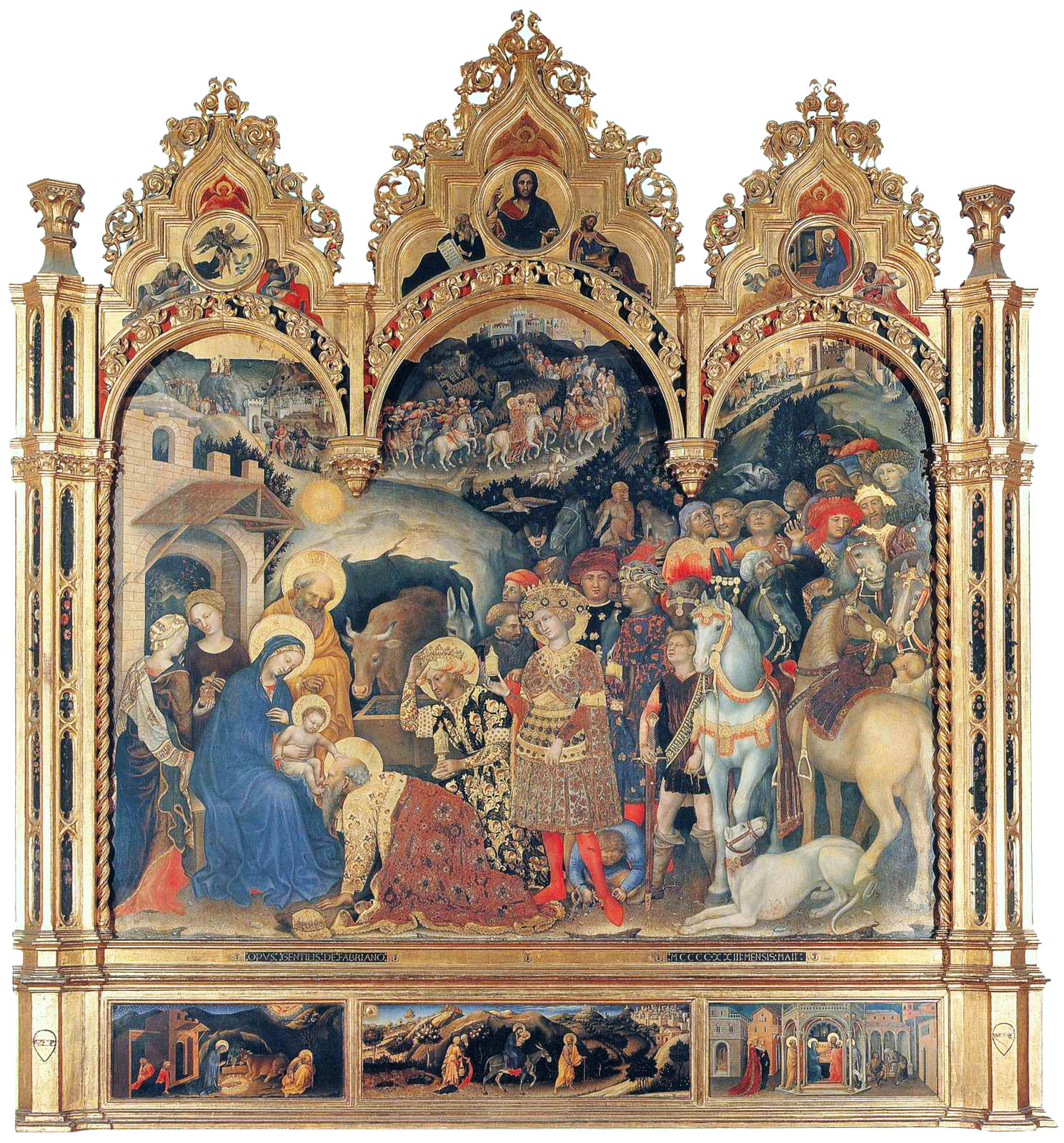
2. Adoration of the Magi, Albrecht Dürer (1471-1528)
Considered one of Dürer’s greatest works from the period after his first trip to Italy, this relatively small painting — measuring less than a meter in size — was presented as a gift to the Holy Roman Emperor Rudolf II by Christian II of Saxony in 1603. Dürer organized the composition around the figure of the “the third king,” a dark-skinned man depicted on the left who leads the viewer through the painting with his gaze. Unlike most Renaissance works on the same topic, the background is composed of a natural landscape rather than human-made architecture. The German artist was famous for his self-portraits, and he included one in this work too by painting the second king as a man with a beard and long hair.
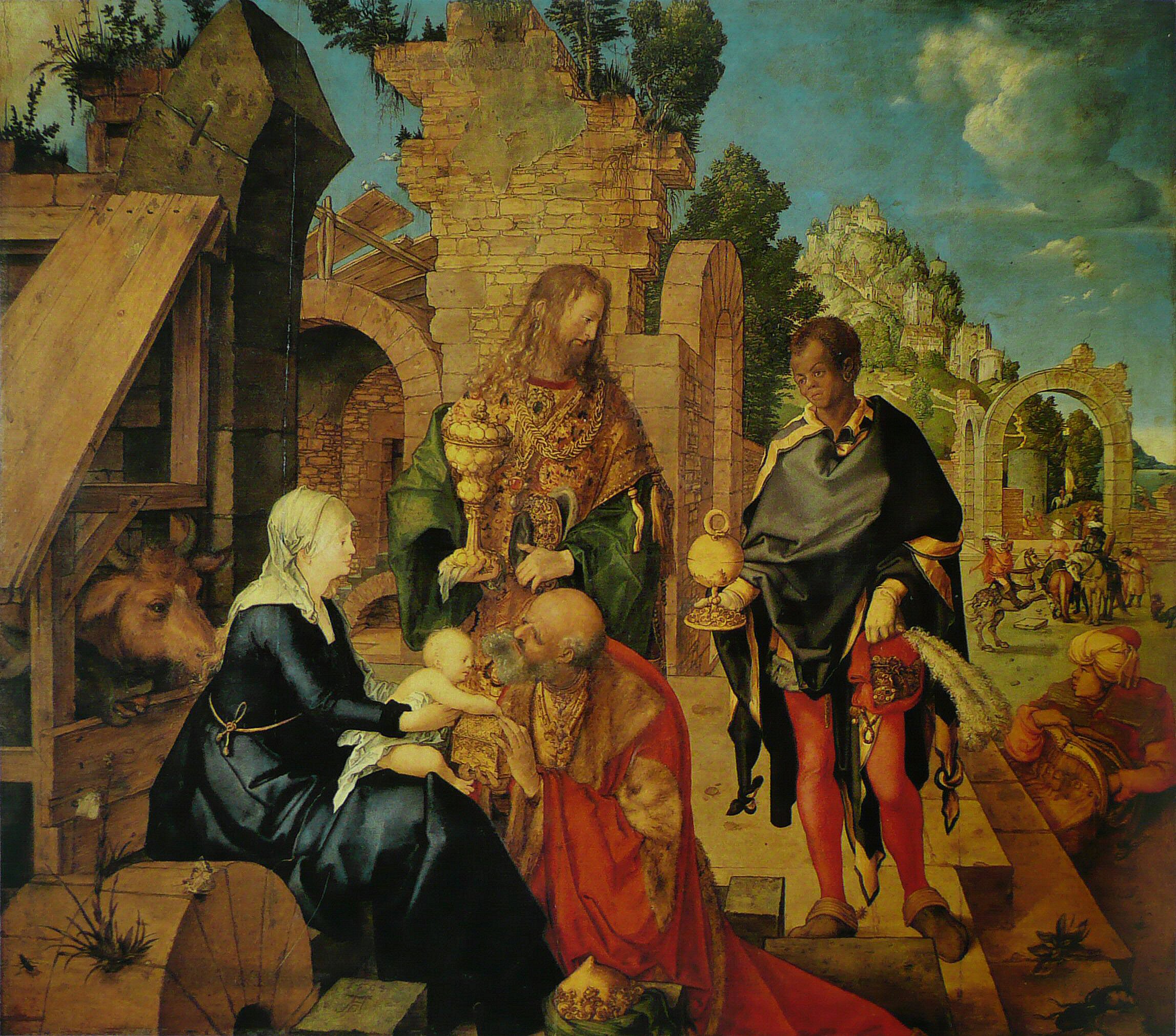
3. Adoration of the Magi, Sandro Botticelli (1475-1476)
In this tempera on panel work, Sandro Botticelli represented three men of Florence’s Medici family, Cosimo, Piero, Giovanni, as the three Kings. Cosimo is the first King, kneeling in front of the Virgin; Piero is the second King, depicted at the center of the picture with a red mantle; and Giovanni is the third King, on Piero’s right. Botticelli himself is depicted at the far right of the painting, wearing an orange robe. The great level of detail with which Botticelli depicted the magi’s clothes is evidence of the influence of the Flemish art school at this point in his career.
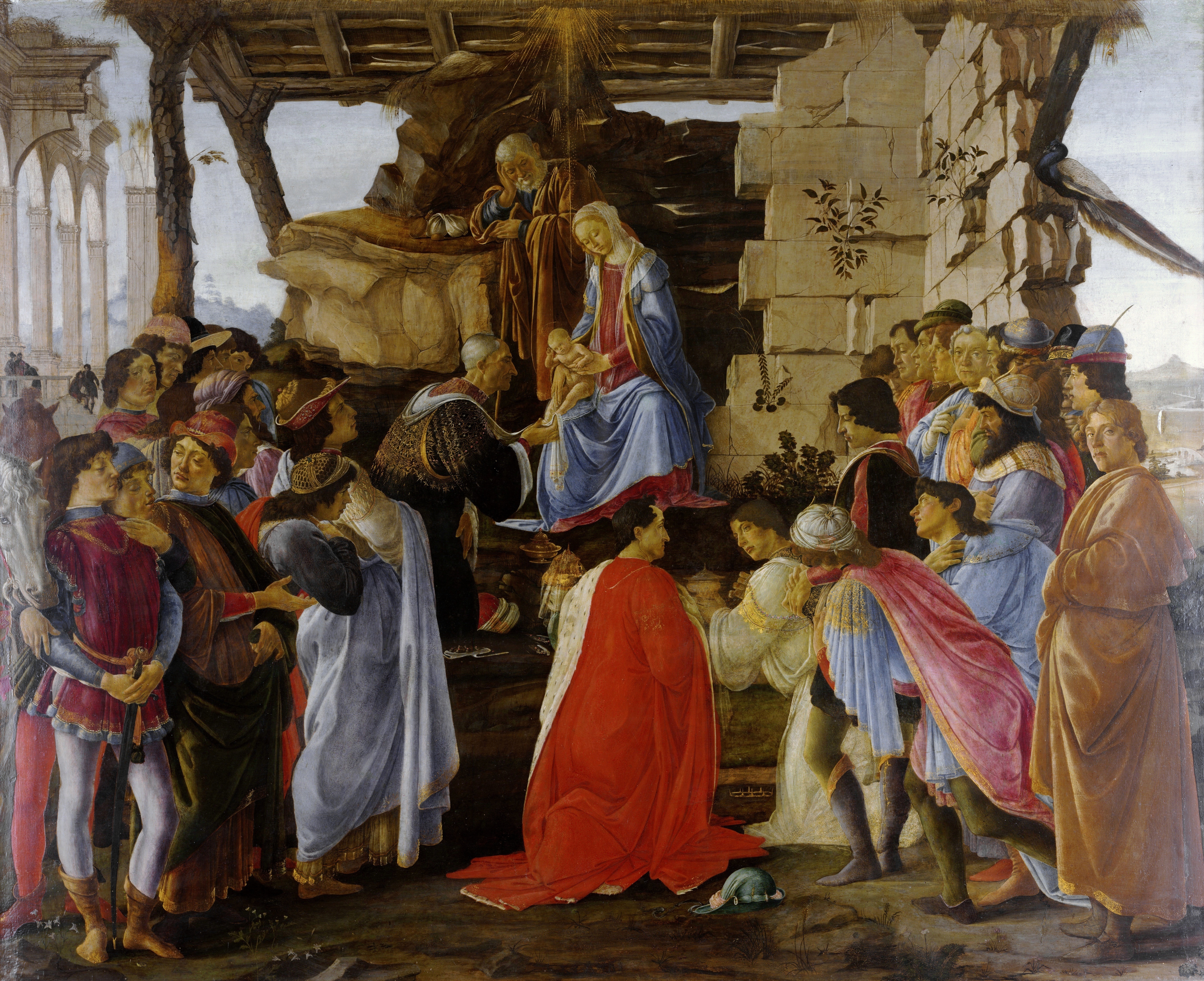
4. Adoration of the Magi, Leonardo da Vinci (1481)
Commissioned by the Augustinian monks of Florence’s San Donato church, this unfinished work was one of Leonardo’s earliest paid works of art. It was left unfinished due to the master’s departure from Florence in 1482. The composition follows a triangular structure, with the Virgin Mary holding the Christ child at the center surrounded by the three kings on each side of the triangle. The background, featuring the ruins of an ancient building and some workmen and knights with horses, contributed to the dreamlike atmosphere typical of Leonardo’s early works.
